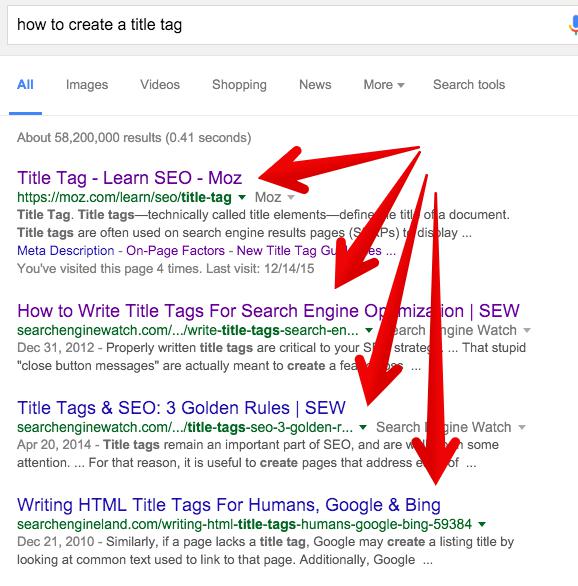

SEO has advanced light years in just a few years.
With all the complexity and progress, it can be easy to forget some of the fundamentals. Sometimes, I find myself thinking about an advanced content marketing technique, then stop myself, realizing that I’ve just leapfrogged over several crucial building blocks of SEO strategy.
If we’re too quick to rush off to play with the shiny objects of SEO, we risk our entire SEO strategy. Sometimes, the best SEO strategy is a simple one, built on reliable SEO practices that have always worked and will continue to work.
In this article, I share three of those strategies. They’re so simple, you might be surprised. But at the same time, you might be shocked that you’ve overlooked them.
Killer User Experience
Want to have a flawless, streamline, powerful, unbeatable, killer SEO strategy?
Do this: Create the best user experience you possibly can.
Often, UX is viewed as a separate discipline. The UX people don’t talk to the SEO people, who don’t talk to the design people, who don’t talk to the IA people, who don’t talk to the developers.
All of SEO is built on the foundation of user experience.
According to Wikipedia, “User Experience (UX) refers to a person’s emotions and attitudes about using a particular product, system or service.”
It’s actually a lot more than that.
The Nielsen Norman group explains, “‘User experience’ encompasses all aspects of the end user’s interaction with the company, its services, and its products.”
But, it’s actually a bit more narrow than that. SEO plays a crucial role in the process of user experience. But viewed in reverse, user experience serves SEO, too.
You can’t have “good SEO” unless you have a good user experience. Why not?
- To have “good SEO,” you must have great content (a beneficial user experience).
- To have “good SEO,” you must have a functional site (an error-free user experience).
- To have “good SEO,” you must have logical site navigation (an easy user experience).
- To have “good SEO,” you must have relevant keywords (a relevant user experience).
- To have “good SEO,” you must have quality backlinks (a trustworthy user experience).
See the point?
I can keep going, but I think the relationship is clear. Every aspect of SEO, no matter how technical, somehow gets back to producing a great user experience.
User experience is not a single discipline, just as SEO can’t be confined to one narrow slice of marketing. They both encompass a wide swath of marketing practices and function. Nate Dame put it clearly with his Search Engine Land article.
Nate approaches it from a Google-is-a-business-vantage. I totally agree, and I see more than the mere economics of optimization at play. SEO is all about user experience.
When you forget this fundamental concept, you lose touch with the whole point of SEO.
Let’s bring SEO back into the realm of improving the user experience. When you improve user experience, from any vantage, you upgrade your SEO strategy to a whole new level of awesome, and that should all be underpinned by the fundamentals of strategy.
Title Tag
The title tag is face-palming simple.
I would guess that 100% of the readers of this article know about title tags, know how to optimize title tags, and know that title tags are important. Why do I mention it?
Recently, I was working with a very knowledgeable SEO. This individual had a mastery of complex SEO topics, a deep understanding of very complex SEO features, and a proven track record of SEO success. Yet when I collaborated with this person on a project, I found a glaringly obvious problem: the title tags on his site were not optimized. (In fact, some of the pages didn’t even have a title tag!)
We’ve probably all done some dumb things in our life. I’ve done more than my fair share of dumb things, so I’m not nailing this person for their oversight.
The incident reminded me that some of the most basic SEO features are easy to overlook. Moz makes this point:
Title tags are the second most important on-page factor for SEO, after content.
Title tags are too important to mess up, let alone overlook. They are thatimportant.
Search engines and algorithms have come a long way, but they still place an enormous amount of importance on title tags.
Title tags are important not just for search engines, but for users too. Whenever you search for something in Google, you see title tags. They are the largest and most noticeable elements of the SERPs.

Here are a few helpful tips on keeping this basic element of SEO as optimized as possible:
- Never rely on auto-generated title tags: WordPress might create your title tag for you, based on the title of your post or page. Don’t simply accept this. Analyze it, tweak it, and optimize it.
- Follow a standard pattern for title tags: For example: “Keyword Rich Title | Brand Name.”
- Never stuff your title with keywords: Keyword stuffing is a dark and distant memory. Don’t do it, especially in title tags.
- Write your title tags for humans: Humans read them, rate them (based on their click-through behavior), and interact with them. Remember, SEO is all about the user’s experience, even on a little title tag!
- Use a keyword in your title tag: Search engines are smart, but they still rely on the almighty title tag as the first source of information on what the page is about. Keep your keyword in the title tag.
- Put your keyword at the front of the title tag: If possible, your keyword should be in the first ⅓ of the title tag. Why? It’s good for search engines, but it’s also helpful for users. Remember, users see the title tag, too.
Title tags matter, so give them the attention they deserve.
More Content
The content marketing boom has produced an undesirable side effect. There’s a lot of really lousy content out there. Just take a look at this number:

Don’t try to tell me all 3.3 million of those are high-quality posts.
As recently as 2010 there was very little demand for content marketing jobs.
Content that is produced quickly, cheaply, and carelessly is not good content. Even if there is a lot of it. But even with the massive growth in the amount of published content, most brands intend to increase their content marketing spending!
According to TechValidate, “In a perfect world, marketers would be able to devote unlimited time and resources towards creating compelling, effective marketing content.”
As imperfect as the world is, many brands are devoting a considerable amount of time and resources towards content marketing. There seems to be no end in sight.
Will there always be such a massive increase in content?
Because of all this poor quality content, many thought leaders have said, “We have a problem.” Some call it “content shock” — the emerging marketing epoch defined when exponentially increasing volumes of content intersect with our limited human capacity to consume it.
That sounds bad.
But wait. No single human being is being asked to consume all the content.
The premise of that statement is flawed. Of course, individuals can’t consume all the content, nor is anyone asking them to.
Each individual consumes only as much content as they choose. It’s not an all or nothing proposition. They may search for content, choose content, consume content, and interact with select content. All the while content is proliferated at a rapid pace. So what?
I agree that low-quality content is a problem. I do not agree that more content is a problem, however.
Although content marketers have been crying “Too much content!” I’ve been increasing my output with success. I ramped up blogging on NeilPatel.com, intensified my posting on Quicksprout.com, launched a webinar series, doubled my rate of guest posting, and started new blogs and websites.
Too much content? I think not. My SEO has skyrocketed, my traffic has exploded, and my marketing funnels are blowing up with fresh, qualified leads.
The point is this: more content is better as long as it’s rock-solid, kickass content. Your audience wants content. They will consume content. They will select the best content available.
Your content can be the best. And the more of it, the better.
Conclusion
SEO can be complicated. Whether you’re a seasoned pro or a growing newbie, there’s always stuff to learn, techniques to master, and areas of knowledge in which to grow.
But no matter how near or far you are, the fundamentals always matter.
The more you can master the basics, the better you’ll become as an SEO and as a marketer.
[“source-searchenginejournal”]
